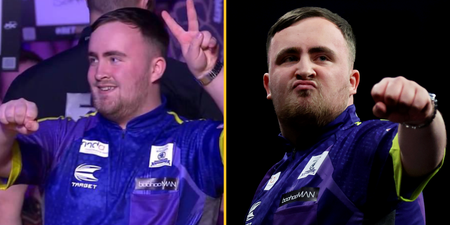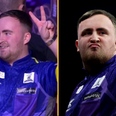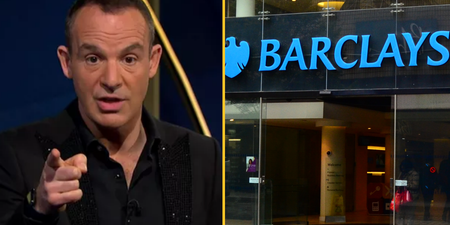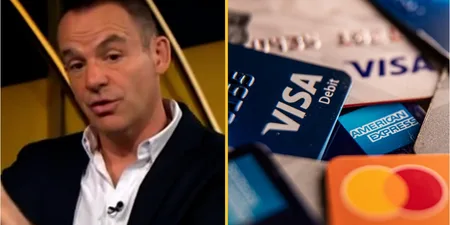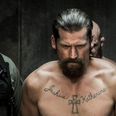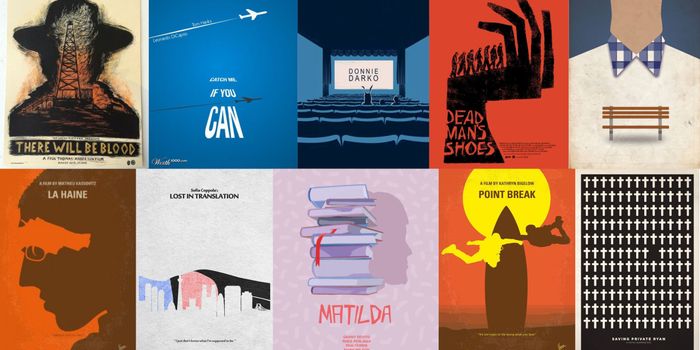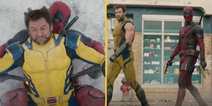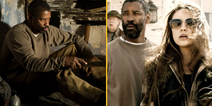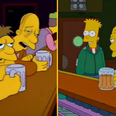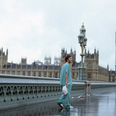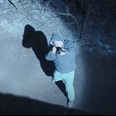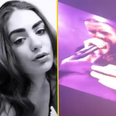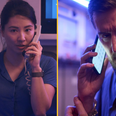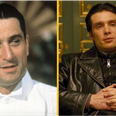It’s awards season in Hollywood and on Sunday, the Academy of Motion Picture Arts and Sciences hands out the gongs more commonly known as The Oscars. To celebrate, twenty members of the JOE team have selected their favourite movies of all time and the reasons why.
Think of all the great opening scenes across the history of cinema: the rooftop chase in Vertigo, the car-bomb in Touch of Evil, ‘Choose Life’ in Trainspotting, the shark attack on the unsuspecting swimmer in Jaws, Carl and Ellie’s life together in Up, the floorboards in Inglourious Basterds, the 23 minutes of intense horror and claustrophobia of Saving Private Ryan.
The body in the boot in Goodfellas.
This feature lacked a great opening scene. How to explain in a paragraph or two about the power, beauty and joy of cinema and what movies mean to us at JOE? How do you quantify the perfect storm where the art of creation meets the act of viewing and engaging? How do you emote about Michael Stuhlbarg’s incredible speech at the end of Call Me By Your Name or the blood gushing from the lift in The Shining, the choice in Sophie’s Choice? Andy’s escape in The Shawshank Redemption?
“He crawled to freedom through 500 yards of shit-smelling foulness I can’t even imagine. Or maybe I just don’t want to.”
And then I came across this quote from the great Martin Scorcese and it summed up everything we feel: “I saw something extraordinary and inspiring in the art of cinema when I was very young. The images that I saw thrilled me but they also illuminated something within me. The cinema gave me a means of understanding and eventually expressing what was precious and fragile in the world around me. This recognition, this spark that leads from appreciation to creation: it happens almost without knowing. For some, it leads to poetry, or dance, or music. In my case, it was the cinema.”
It’s awards season in Hollywood and with The Oscars on Sunday we wanted to tell you about our passion for film and everything that goes with it: direction, cinematography, scriptwriting, acting, even the poster art-work. Especially the poster art-work. So lean back in your middle row seat, turn off your phone and reach a hand inside your box of sweet popcorn as we take you on a cinematic journey of the twenty films – in no particular order – that we love more than any, through the eyes of JOE staffers.
Take it away Seb and Mia.



Matilda (1996, directed by Danny DeVito). By Lucie Carter, Multimedia Producer.
SYNOPSIS: The forces of right and wrong are pitted against each other in this Roald Dahl adaptation as gifted daughter Matilda (Mara Wilson) battles unkind parents (DeVito and Rhea Perlman), and an evil school principle played fantastically by Pam Ferris.

“I can’t recall the first time I watched Matilda, or even why I came to like it so much. Matilda Wormwood and I have nothing in common. I can’t move objects with my eyes and I for sure can’t do maths: that’s why I studied Fine Art. Perhaps, other than Bruce Bogtrotter’s lust for cake, I dare say I don’t much have anything in common with any of the characters. I think we can all agree there’s some wild satisfaction in seeing villains getting their comeuppance, but even so, it was never just about the novelty of adults being wrong sometimes. I saw something liberating in a film that taught us we can be in control, and that it doesn’t matter how small we are (I’m 5’2″). Matilda was independent, and she only gave a fuck about the things integral to her happiness. That’s pretty smart. Also, I fancied Miss Honey.”
Donnie Darko (2001, Richard Kelly). By George Crewe, Social Media Executive.
SYNOPSIS: A mentally disturbed schoolboy – Darko (Jake Gyllenhaal) – encounters a six-foot demon-bunny and is told the world will end. Then a jet engine smashes through the roof of his house whilst he’s sleepwalking on a golf course. It’s pretty much downhill from there.

“A film that encapsulates time travel, mental health and romance. All in one sitting. The first time I watched Donnie Darko I was a teenager and utterly gripped by it, yet equally confused by the ending. So, I had to watch it again. Some might see this as a bad thing, having to watch a film more than once to truly understand it, but for me it only made me love it more. Challenging such topics in film are not easy, but Kelly’s masterpiece does so, alongside a fascinating storyline and concept and aided by a brilliant ’80s soundtrack headlined by Michael Andrews and Gary Jules’s Mad World.
Donnie’s mind is troubled, yet he is incredibly intelligent, a character that is beautifully played by a young Jake Gyllenhaal. On repeat viewings over the eighteen years since its release I continue to discover new things I hadn’t seen before. It’s a film that divides opinion, even amongst its fans. But isn’t that a refreshing change? Like all good movies, Donnie Darko challenges your perceptions. It is quixotic and breathtaking. Personally, I’m yet to find a film like it and would recommend to all those who haven’t watched. Just make sure you do so twice.”

Point Break (1991, Kathryn Bigelow). By James Wilkins, Executive Creative Director.
SYNOPSIS: Bank robberies, surfers, a pre-Tank Girl Lori Petty, sky dives, Ronald Reagan, meatballs, Anthony Kiedis from the Red Hot Chilli Peppers and a couple of epic chase scenes. You literally couldn’t ask for anything else.
“What do you think of when you hear the words ‘Point Break’? Surfers? Machismo? The word ‘brah’? Keanu Reeves screaming and shooting his gun in the air? ‘Get me two, Utah‘? On the surface, Point Break is indeed all these things – an FBI agent who gets too close to the rule-breaking, renegade bank robbing surfers he’s investigating. But this film is much, much more. Point Break is an astute, subtle subversion of the genre which is unsurprising given it was directed by Kathryn Bigelow who also brought us the brilliant Zero Dark Thirty and Best Picture Oscar winner The Hurt Locker – films that also played with the concepts of masculinity, obsession and sacrifice.
Point Break sees all its characters on a journey, whether it’s Bodhi’s search for spiritual enlightenment through giant waves, Angelo Papas’ last shot at redemption by way of nailing ‘the Ex-Presidents,’ Tyler’s search for stability and to escape her troubled youth or Johnny Utah’s realisation that there’s more to life than being a straight-A quarterback, FBI superstar. This is no simple tale of good and evil: this is a story of friendship and obsession, and if that doesn’t appeal, it’s got more quotes per minute than a Prince Charles Cinema Arnie marathon. I’ll leave you with this from Gary Busey’s Papas: “Listen, you snot-nosed little shit! I was takin’ shrapnel in Khe Sanh when you were crappin’ in your hands and rubbin’ it on your face!” Brilliant.”
Catch Me If You Can (2002, Steven Spielberg). By Ciara Knight, Senior Writer.
SYNOPSIS: After an incredible opening title sequence – a tribute to the genius that is Saul Bass – Leonardo DiCaprio leads Tom Hanks on a merry dance as Frank Abagnale Jr, one of the most famous con-artists in history, who faked over eight identities, several professions, and cashed over $2.5 million of forged checks during the 1960s.

“Somehow the incredibly inexperienced and unknown trio of Leonardo DiCaprio (who?), Tom Hanks (whom?) and Steven Spielberg (whomst?) managed to pull together in spite of the odds to produce what I am comfortably deeming to be The Best Film Of 2002 And Also Maybe Ever. Catch Me If You Can tells the truly unbelievable story of how Frank Abagnale Jr. conned his way through being a substitute teacher, airline pilot, doctor and lawyer to amass a fortune of millions of dollars, all before the age of 19. The movie combines flawless acting with a gripping (and true) story, along with perfect visuals to result in a timeless masterpiece.
At an initially daunting 2 hours 21 minutes long, CMIYC retains your full attention span as the story becomes more and more wild at every turn. I often lie awake at night, disturbed by the fact that there are people alive in the year of our Lord 2019 that haven’t seen Catch Me If You Can yet. Shame on you. Please rectify this immediately.”
https://www.youtube.com/watch?v=7nv2S_S9MlU
La Haine (1995, Mathieu Kassovitz). By Nooruddean Choudry, Creative Director.
SYNOPSIS: When a young Arab is arrested and beaten unconscious by police a riot erupts in one of Paris’s most violent suburbs. Three of the victim’s peers wander aimlessly about their home turf in the aftermath of the violence as they try to come to grips with their outrage.

“La Haine (Hate) came out nearly a quarter of a century ago. It is a French-language film very much rooted in a specific time and place, namely the banlieues of Paris in the early-to-mid nineties. Filmmaker Mathieu Kassovitz was compelled to write it following the fatal shooting of a young Zairian immigrant in police custody. It should serve as a dated snapshot of a particularly volatile era in French society. Sadly, it only grows in relevance with each passing day. As hatred takes over the world, La Haine increasingly feels like a warning siren we didn’t heed.
The story revolves around three friends of immigrant stock – Vinz, Hubert and Saïd. They are each very different but share an inner rage for a racist police force that treats them like shit, and a society that wishes they didn’t exist. We follow their journey over a 20-hour span, from the aftermath of a riot to a chilling conclusion. In that time we are audience to a monochrome masterpiece that is at once brilliantly funny, utterly terrifying, and absolutely stunning to look at. There is a tracking shot at around the 40-minute mark that is just breathtaking. You come out of it gasping and shook – both by the power of the filmmaking and the continuing prescience. It is a film that shakes you from your so-far-so-good apathy, and challenges you to do something about society’s hateful trajectory before it’s too late. Le plus dur c’est pas la chute, c’est l’atterrissage.”

2001: A Space Odyssey (1968, Stanley Kubrick). By Kyle Picknell, Staff Writer.
SYNOPSIS: An imposing black structure provides a connection between the past and the future in this adaptation of an Arthur C. Clarke short story. When a group of astronauts are sent on a mysterious mission, their ship’s computer system, HAL, begins to display increasingly strange behavior, leading to a tense showdown between man and machine.

“It’s difficult to do justice to a film like 2001, or any pantheon film really, in the space of a few paragraphs. I understand the resistance to them, too, the lofty, irrepressible weight that comes with the likes of Citizen Kane, The Godfather, Vertigo…..It almost makes you not want to watch them at all. Nothing could possibly be as good as some people think those films are. What I’m saying is expectations are boring, and they’re worth fighting, and nothing I will write here can make you want to go and see a film like 2001 if you haven’t already. I understand that.
There’s a very real chance you won’t make it through the sparse opening chapter of the film, The Dawn of Man. Nothing happens, really. My girlfriend at the time of my first viewing didn’t and fell asleep to those aching landscape-painting shots of a primitive earth. I was left to traverse the rest of Stanley Kubrick’s space nightmare turned moral quandary turned ecstatic meditation on the human condition, and life and art, alone.
I was overwhelmed. I’m not ashamed to say that. She awoke to find me in a kind of paralysis, unable to express anything about what I had just seen. What was the film like? Well… I don’t actually know. I don’t know what it was like. I’m still thinking about it, and I don’t know. And I might never know.
Since then, thanks to an ill-advised University dissertation and an equally ill-advised Master’s in Film that I didn’t complete, I have watched 2001 more than I have watched my family give and receive Christmas presents around the tree and more than I’ve watched the football team I support win actual football matches. I have watched 2001 more than I’ve watched the sun come up. The most recent viewing came at the Prince Charles Cinema in Leicester Square a few months ago, a special screening in unrestored 70mm print. Even in a sold-out theatre I still felt the same restless loneliness I felt in a living room somewhere in the Midlands, even as a head lay on my shoulder.
Every frame of 2001 is a body blow, and it leaves you bruised, and scared, and helpless. The third act, whatever technological advancements we have seen or ever will see, will remain the most effective annihilation of the senses you will ever experience. I promise you that. Movement, sound and colour collide into darkness. And quiet. Stillness and confusion. The knockout punch hits you like a last kiss to the forehead does. When the credits rolled a girl two seats down from me began sobbing. Loudly. She could have been feeling anything from a visceral, overwhelming joy, to a cold eternal sadness. Or it could be all that LSD she might have taken during the intermission (yes there was an intermission, yes it sucked).
I sat there too, not to comfort her – I could see her head tilted onto someone else – but to soak in that same afterglow. Even as I listened I was glad just to be there, I was happy just being. I guess you could call it facing the lofty, irrepressible weight of existence and being OK with what you see. I guess you could call 2001 the antidote.”
There Will Be Blood (2007, Paul Thomas Anderson). By Rich Cooper, Senior Producer
SYNOPSIS: Ruthless silver miner turned oil prospector Daniel Plainview moves to oil-rich California and cons landowners into selling him their valuable properties for a pittance. However, local preacher Eli Sunday suspects Plainview’s motives, starting a slow-burning feud that threatens both their lives.

“There are a hundred ways to read There Will Be Blood. Most obviously the film is a commentary on capitalism, the way it ruins the people and places left in its wake, and how it scrapes away the soul of its instigators. But the film has a wider scope than this. The savagery of civilised life; fraudulent religions; the definition of a family; killing the old ways and carving a new frontier. All can be read into There Will Be Blood. Above all, it’s about a man who denies himself love in the pursuit of power, domination, and self-destruction.
Daniel Day-Lewis’ performance as oil prospector Daniel Plainview brought the actor his second Oscar. In Plainview, Day-Lewis has crafted one of modern cinema’s greatest monsters. While much of There Will Be Blood is gnarled and roaring, it is the quiet moments of pain, where Daniel lets go of his monstrousness, allows himself to be vulnerable, and is betrayed, that keep bringing me back for another viewing. This is uncompromising, dark, searing cinema at its absolute finest.

Forrest Gump (1994, Robert Zemeckis). By Vikash Jasani, Brand Partnership Director.
SYNOPSIS:A brisk trot through events in American history since the 1950’s via the eyes of the amiable idiot-savant, Forrest Gump (Tom Hanks). The story is told through a series of flashbacks as he sits on a park bench waiting for the return of his beloved Jenny.
“Forrest Gump is the greatest film of all time. No matter what genre of film you like there is something for everyone. It’s comedy, war, drama, underdog and romance all wrapped in to one feel-good package. It’s obviously full of timeless quotes, it’s given us a great collection of GIFS, but above and beyond everything else, Tom Hanks pulls off a brilliant portrayal of human transformation, from a young disabled boy to a National Hero. You watch as he grows both emotionally and physically throughout the film, from someone you think you’ll pity to a man you just can’t help but fall in love with. By the time the credits roll you’re left with the message that if you’re a good person and you do the right thing, everything will turn out pretty much OK. He also taught Elvis how to dance. True story.”
American Beauty (1999, Sam Mendes). By Stan Evans, Account Executive.
SYNOPSIS: A telesales operative becomes disillusioned with his existence and begins to hunger for fresh excitement in his life. Funny, sad, wistful and occasionally hopeful, it’s a peek behind the curtain of the American Dream that features astonishing performances across the board.

“I recently re-watched American Beauty for the first time in a few years and realised that everything about it is basically faultless. Seriously, show me something that’s wrong with this film (apart from the obvious and justified objections to real-world Kevin Spacey). The direction, the cinematography, the soundtrack, the writing, the acting (Chris Cooper, you’re the real MVP), it’s all perfect. Lester Burnham is one of the all-time great movie characters. I imagine myself re-enacting his greatest hits on probably a weekly basis; discovering his wife’s affair at the drive-thru, throwing the plate against the wall at the dinner table, “This isn’t life! This is just stuff!”, reflecting on it all at the end. Sometimes I get scared that this means I’m going to turn into him one day. Maybe that should worry me, but it doesn’t really, because I just find it all so fascinating and hilarious and beautiful and sad. I guess what I’m saying is bring on the utter despair of middle-aged, middle-class non-existence! Can’t wait!”

Dead Man’s Shoes (2004, Shane Meadows). By Alex Roberts, Fitness Editor.
SYNOPSIS: A disaffected soldier (Paddy Considine) turns angel of vengeance as he heads back to his Derbyshire home town to get even with a group of locals who brutalised his mentally-challenged brother.
“This film has absolutely everything; it’s a tale of revenge that has you questioning how far you’d take your own morals. No spoilers, but the mesmeric Considine does some absolutely unspeakable things to get his own back. Some of which are arguably more twisted and degrading than what he’s seeking revenge for as Meadows and his lead take ‘anti-hero’ to the absolute extreme. You are ultimately left wondering whether your own sense of justice – and society’s as a whole – is acceptable. It also contains one of the most iconic scenes you’ll find in any of the other 19 films on this list – see below. Considine has never been better or more menacing as he faces up against Gary Stretch’s Sonny for the first time outside some abandoned garages, rain glistening in his hair. “I’m not threatening you mate. It’s beyond fucking words. I watched over you when you were asleep and I looked at your fucking neck and I was that far away from slicing it. You’re fucking there mate!”


American History X (1998, Tony Kaye). By Melissa Reddy, Senior Football Correspondent).
SYNOPSIS: Upon his release from prison, neo-Nazi Derek (Edward Norton) vows to change his ways and prevent his younger brother, Danny (Edward Furlong) – who idolises Derek – from following in his footsteps. As he struggles with his own deeply ingrained prejudices, Derek wonders if his family can ever overcome a lifetime of hate.
“Despite premiering 21 years ago, American History X – with its blood-filled, bone-breaking dive into the caustic world of white supremacy – packs a greater punch today. The film follows budding neo-Nazi and high school student Danny Vinyard, who chronicles the events that led to his older brother Derek’s incarceration for the murder of two black men. The elder sibling’s story swings from forming an LA gang of white supremacists to his rehabilitation in prison, but the full redemption tale is thwarted by a hate-fuelled tragedy.
Listening to Derek, played by the chameleonic Edward Norton, at the beginning of his journey – “Our border policy’s a joke. So, is anybody surprised that south of the border, they’re laughing at us? Laughing at our laws?” – is akin to – gulp! – a tweet from the actual President of the United States now. Billed as a message movie, a warning of sorts, American History X is scarily the reality we live in today. One major difference is that booted-up skinheads inked with Nazi insignia are no longer the definitive markers of a racist – these days they blend in, their rhetoric is normalised and given mainstream airing. Moreover, some of them have been given the power to shape the world.”
https://www.youtube.com/watch?v=ya10UH1UdTk
Saving Private Ryan (1998, Steven Spielberg). By Richie Driss, Presenter.
SYNOPSIS: Captain John Miller (Tom Hanks) takes his men behind enemy lines during World War Two to locate Private James Ryan (Matt Damon), whose three brothers have been killed in combat. Includes one of the most brutal opening scenes in the history of cinema, which cost $11 million to shoot and involved more than a thousand extras.

“OK, first things first; yes I’m aware that the theme tune for this movie could be the “America, fuck yeah!” anthem from Team America, and that it’s George Bush Jr.’s favourite film, and that I’m now potentially giving you reasons not to watch it. But let’s just take it for exactly what it is shall we? A contained (based on a true) story about a close-knit group of U.S. Rangers during and in the following days of, the Omaha Beach invasion of June 6th 1944, who, having survived that, then have to potentially lay down their own lives to save one man whose three brothers have been killed in action. It then poses an important question: when is one life more important than another?
The opening 23 minutes is a cinematic tour-de-force. What follows is another two hours of moral ambiguity: risk vs reward, incredible acting, zero compromises and eventually, five Academy Awards out of its eleven nominations, including ‘Best Director’ (how it lost out on “Best Film” to Shakespeare in Love’ is a massive nonsense….the proof being: I don’t see that film on this list). There are certain films that are essential, important viewing for everyone; Schindlers List, 12 Years A Slave and I, Daniel Blake to name but a few. This absolutely belongs in that pantheon, in fact, personally, it created that pantheon. Masterful, emotive film making in every aspect.”

Goodfellas (1990, Martin Scorcese). By Mike Kneebone, Videographer.
SYNOPSIS: A story told across 30 years of the lives of a group of neighbourhood crooks as narrated by Henry Hill (Ray Liotta), who progresses from taxi rank punk to robbery, hijacking, extortion, GBH, drug dealing and, finally, informing. With stunning performances from Robert De Niro, Lorraine Bracco and notably Joe Pesci, it is Scorcese’s masterpiece.
“Goodfellas is ranked fifteen on the list of films that most frequently use the word “fuck”. The year it was made (1990) it was ranked number one. Fuck yeah! Also – it’s the best mafia mob gangster movie ever made. If you disagree I will fight you. No, I lie, I won’t fight you. I will politely disagree and then wonder what life would be like if I wasn’t polite. Maybe Goodfellas represents my yearning to be impolite. Maybe that’s why I like it so much. Or maybe it’s simple – I like guns, violence and crime on the big screen. Scorcese, De Niro and Pesci. Fuck yeah indeed.
There’s one scene that continues to knock my fucking socks off. Every single time. To the point where I’ve stopped wearing socks. Henry and Karen walk into the Copacabana restaurant while ‘Then He Kissed Me’ by The Crystals is playing. Great track by the way. Henry guides Karen toward a secret entrance, casually bribing his way into the kitchen. In one LONG impressive take the pair make their way through the restaurant to their table – which is assembled upon their arrival. Henry is gifted a bottle of champagne by a neighbouring table as the couple settle into the best seats in the house. Karen says: “What do you do?” Henry lies and says, “I work in construction”. So, so good. Tell me you wouldn’t enjoy that. If you do, I will…… politely disagree.”
Happy Gilmore (1996, Dennis Dugan). By Fred Stanley, Paid Social Media Executive.
SYNOPSIS: All Happy Gilmore (Adam Sandler) has ever wanted is to be a professional ice hockey player. But he soon discovers he has a talent for an entirely different sport: golf. When his grandmother (Frances Bay) learns she’s about to lose her home, Happy enters a golf tournament to try and win enough money to buy it for her.

“Did Happy Gilmore win the Tour Championship in 1996 or did Shooter McGavin lose it? It’s a question I ask myself almost every day. Like Stevie G winning the Premier League, Shooter never did get his Gold Jacket, but it won’t tarnish his legacy. Not with tournament wins like the Waterbury Open on his resume. Marvel said they created the most ambitious crossover in history with Infinity War, but I beg to differ; Happy Gilmore was draining 15 footers with a hockey stick!
What other film could seamlessly integrate Apollo Creed, Bobby Boucher and Jaws? The soundtrack is five star – Exile’s “I Want to Kiss You All Over” is enough to make any loved-up couple weep, and who can forget Happy falling for the Ninth Green at Nine trick? It’s a secret of the pros. No other film is as quotable and, like all other true classics, has never spawned a sequel. Now if you’ll excuse me, the asteroids machine is calling my name from the games room.”

The Royal Tenenbaums (2001, Wes Anderson). By Matthew Stanger, Head of Football.
SYNOPSIS: Royal Tenenbaum (Gene Hackman) and his wife Etheline (Anjelica Huston) had three children before separating. All three are extraordinary, but virtually all memory of their brilliance has been erased by two decades of betrayal, failure, and disaster. The Royal Tenenbaums is the story of that family’s sudden, unexpected reunion.
“I was 16 when I first watched The Royal Tenenbaums. My grandma bought it for me on VHS, and one Sunday afternoon in the summer holidays I finally took a break from Tony Hawk’s Pro Skater 3 to stick it on the telly in the back room. I remember being immediately captivated by almost every aspect of the film; by the playful set design, the costumes, the soundtrack, the incredible cast. By a story so ordinary in its central themes of family and reconciliation yet told with such delicate humour through the eyes of each protagonist, warmly narrated by Alec Baldwin.
In many ways it is the perfect coming of age film. The arrested development of the characters – especially Luke Wilson’s Richie, a retired tennis prodigy who has fallen in love with his adopted sister – was a pertinent teenage reminder that it takes time to figure out what you’re doing in life. And if you want to smash a few more half pipes on Tony Hawk’s Pro Skater 3 while you’re doing that, then that’s okay.
There is also something reassuring in the powerless inevitability of each character’s undoing. Ability, effort and consideration are all well and good, but things probably won’t work out the way you planned. So, make the best of that. I’ve since watched all of director Wes Anderson’s films and enjoyed each and every one, but it’s the dysfunctional charm of The Royal Tenenbaums that I revisit most. I still have the VHS but no longer a player, which is as fitting a metaphor for Gene Hackman’s eponymous Royal as I can think.”


Enter the Dragon (1973, Robert Clouse). By Dilraj Athwal, Brand and Strategy Director.
SYNOPSIS: In his final film, Bruce Lee tracks down the drug dealer who was responsible for the death of his sister and tries to bring him to some form of kung-fu inspired justice via ‘Han’s Tournament’, a martial arts competition inside an island fortress.
“Enter the Dragon has it all – an emotional hook, realism, meaningful fight scenes and the ability to bring to light the topic of dark underworlds: what’s on the surface is never the full story and Enter the Dragon certainly isn’t just a ‘martial arts’ movie. It’ll always be the original martial arts movie with substance. The star quality is unquestionable with Bruce Lee, Jim Kelly and John Saxon all on the top of their respective games with Lee especially delivering some classic one liners: “boards don’t hit back” and “the art of fighting without fighting” being two of the best. Kelly also gets his fair share of great scripting, with “I’ll be too busy looking good,” a personal favourite.
His relationship with Han throughout the tournament, is tense. Both men seem to have worked out the other and are merely waiting for the moment to strike. When it comes it’s one of the greatest fight scenes of all time. Han and his knifed hand, the mirrored room, the wound to Lee’s chest……all classic moments of cinema that transcend the genre.
Enter the Dragon will always be a timeless movie which I’ll watch with the next generation just as my Dad and I have watched on many a Sunday. I will always remember the movie for its authentic view of east and western culture and its ability to touch on issues such as social injustice and morality. And here’s a little-known fact: Jackie Chan was also in the movie and posed as a stunt double for some of Bruce Lee’s scenes. A must-watch!

True Romance (1993, Tony Scott). By Ange Kilgannon, Account Director.
SYNOPSIS: A lonely pop culture geek (Christian Slater) marries a call girl (Patricia Arquette), steals cocaine from her pimp, and tries to sell it in Hollywood. The owners of said cocaine – the Mob – try to track them down in an attempt to reclaim it.
There’s so much to love about this film, but for me its charm and heart lies in Alabama Worley. Alabama is something special: watch this movie and you’ll fall in love with her, from her iconic style to her voice and her laugh. But she’s also so much more than that: look past her sweet exterior and you’ll see more than just a call girl. She has grit and she’s fierce, protecting what she loves at any cost. A female lead with strength and defiance at a time when strong female leads like her were rarely seen, shone bright for me and captured my heart.
“When you are tired of relationships, try a romance.”
At the heart of this film lies a true romance – between Alabama and Clarence – but it’s so far removed from the conventional. It’s an all-encompassing, never predictable, intoxicating romance. This love story – albeit a messy fucked up one – is something you’re constantly rooting for. Their love is sweet and innocent, tugging at your heartstrings. Despite the complications and the sinister places their love goes, it remains a constant, always unwavering. Their love is pretty simple: it’s full on and there are no rules and I think everyone can take a little lesson from that.
“You’re so cool.”
These words run through the film, from the Hans Zimmer song that opens the movie to Alabama writing them on a napkin. Being cool is so subjective but on a purely aesthetic level, True Romance is cool to its core. The two main characters are the absolute definition of the word, as is the pink Cadillac getaway car they drive. Even Clarence’s Elvis-formed hallucinations are cool. But the message in the film which resonates above everything else is what it truly means to be cool is nothing to do with the exterior: to be a kind, good-hearted person who’s true to yourself, and who loves unreservedly…… that’s cool.
Finally, the cast. You couldn’t dream up a better ensemble: Brad Pitt in one of his first roles as a stoner flatmate, Gary Oldman as a Rasta pimp, a brief cameo from Samuel L. Jackson, the late James Gandolfini, Val Kilmer, and the brilliant combo of Dennis Hopper and Christopher Walken who appear together in that Sicilian scene, in which Quentin Tarantino – who wrote the film – has said he was most proud of.
There’s so many reasons to love this movie and these are just a few of mine but trust me, I could go on.”

La La Land (2016, Damien Chazelle). By Rebecca Fennelly, Head of Brand and Communications.
SYNOPSIS: Sebastian (Ryan Gosling) and Mia (Emma Stone) are drawn together by their common desire to do what they love. But as success mounts they’re faced with decisions that begin to fray the fabric of their romance, and the dreams they worked so hard to maintain in each other threaten to rip them apart.
“My favourite movies provide a kind of escapism that stays with me long after I watch them. Kind of like how the memories of a holiday live on with you, and the urge they give you to return again and again. For me, La La Land is like this incredible place that I want to keep visiting, even though it makes my heart ache a little every time I do. From the first few beats of ‘Another Day of Sun’ in the very first scene, I’m whisked away to this romantic, insanely colourful world that blends “Old Hollywood” fantasy with the trials and tribulations of modern life.
The setting feels a million miles away from reality, yet the story is unmistakably relatable, because who hasn’t been faced with a head versus heart crossroad in their life? In the case of Mia (Emma Stone) and Sebastian (Ryan Gosling), it is love versus ambition – the two destined to be mutually exclusive. I’ve seen this movie so many times and I still get this silly nonsensical feeling of hope that things will change.
La La Land has everything you could want from a movie – A beautifully written story, hugely entertaining from beginning to end, stunning cinematography (shot in a format that was used prominently throughout the 1950s), faultless on-screen chemistry between two completely charming leads, and music that makes you go from dancing in your seat to holding your breath, to shedding a tear. Ultimately this movie is about belief in love, having hope in the possibility of your dreams, and being able to live with the reality of them too.
“Here’s to the ones who dream, careless at it may seem”
Top Gun (1986, Tony Scott). By Gavin Johnson, UK Managing Director.
SYNOPSIS: The Top Gun Naval Fighter Weapons School is where the best of the best train to refine their elite flying skills. When hotshot pilot Maverick (Tom Cruise) is sent to the school, his reckless attitude and cocksure demeanor put him at odds with the other pilots, especially the cool and collected Iceman (Val Kilmer).

“I have watched Top Gun sixty-two times. As a 12-year-old growing up in the sleepy Yorkshire Dales, the film blew me away. Tom Cruise is cocky, charismatic and vulnerable. Kelly McGillis is beautiful and confident. Val Kilmer plays Maverick’s nemesis Iceman with swagger. A backdrop of the mountains of San Diego and the aircraft carrier far out into the ocean, backed up with a brilliant soundtrack that’s peppered with 80’s icons such as Kenny Loggins and Harold Faltermeyer, and a dip into the 60’s with the Righteous Brothers and Jerry Lee Lewis. What more could you ask for? The story makes you laugh and cry whilst the visual effects keep you on the edge of your seat. I love Maverick, I love Charlotte Blackwood and I love Top Gun.”

Lost in Translation (2003, Sofia Coppola). By Simon Clancy, Head of Audio.
SYNOPSIS: Two strangers – Scarlett Johansson and Bill Murray – in a foreign land find escape, distraction and understanding amidst the bright Tokyo lights after a chance meeting in a hotel bar. They form a bond that’s as unlikely as it is heartfelt and meaningful.
“There’s a line in Sofia Coppola’s masterpiece of human emotion that has stayed with me since the very first time I watched it, uttered by Johansson’s Charlotte whilst in conversation with Murray’s Bob Harris late one night: “I just don’t know what I’m supposed to be”. Those nine word have made me think repeatedly in the sixteen years since that it’s OK not to know what your path is in life regardless of your age. And that’s a comfort.
Maybe Coppola knew people would feel that way. Or maybe she wanted to convey that’s it’s OK to be confused, whether you identify with Charlotte’s quarter-life crisis or with Bob’s fifty-something ennui. Or maybe she was just too busy propagating loneliness, unspoken opportunity and friendship with no strings.
As for the plot: ageing movie star Harris is in Japan to shoot a whiskey commercial for $2 million and to nurse a midlife crisis. Charlotte is there because her photographer husband leaves her alone to find herself while he’s off shooting rock stars. They’re drifters drifting, three decades apart yet closer than perhaps either has ever been to another human being. They spend days and nights together – platonically – in strip clubs, karaoke lounges, hotel bars and hospitals. She gives him his spark back. He loves her from a distance, sees what might have been yet never will. It’s funny, tender, cool, incredibly sexy and beautifully acted.
The final scene (see below) in which a departing Murray whispers something to Johannsen – apparently totally unscripted – is heart-breaking. It’s heart-breaking because you know they’ll never see each other again. And because nobody knows what was uttered. As Coppola once said when asked what passed between them: “I always like Bill’s answer: that it’s between lovers, so I’ll leave it at that.” Lost in Translation is about living in the moment and the wonder of possibility. And I adore it.”

Artwork courtesy of hugscream, Prrain Illustration, Chung Kong Art, allworth1000, fineartamerica, crqsf.deviantart, Dan Grzeca, Truica Madalin, Olaf Lyczba, Black Dragon Press, Mags, manof2moro, Displate, Jordan Bolton, notitleproduction, WalkerMatt, A Deniz Akerman.
RELATED ARTICLES
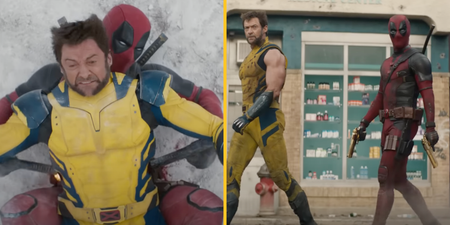
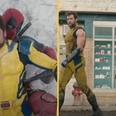




MORE FROM JOE




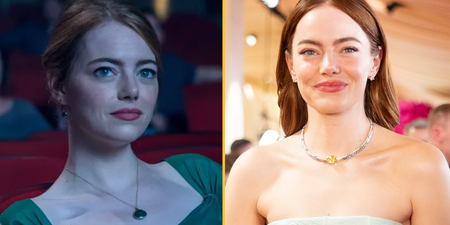
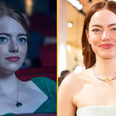
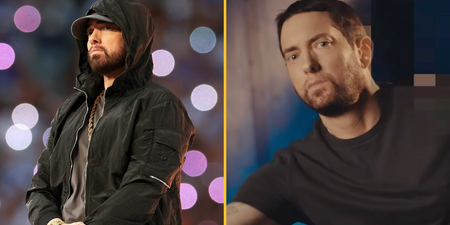
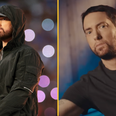

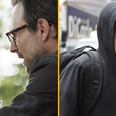

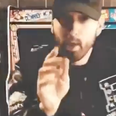


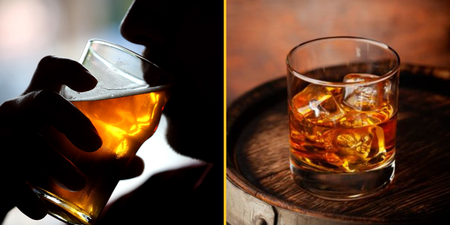

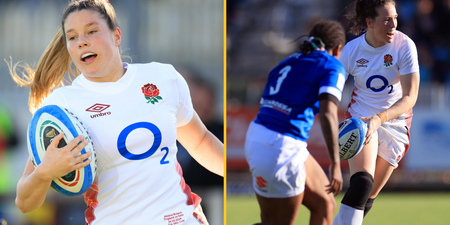







MORE FROM JOE
